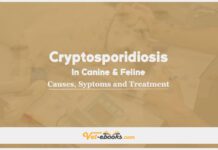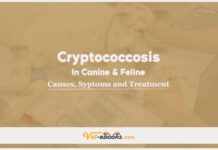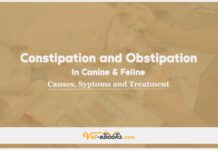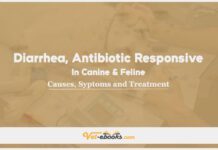Canine Schistosomiasis(Heterobilharziasis): Causes, Symptoms and Treatment
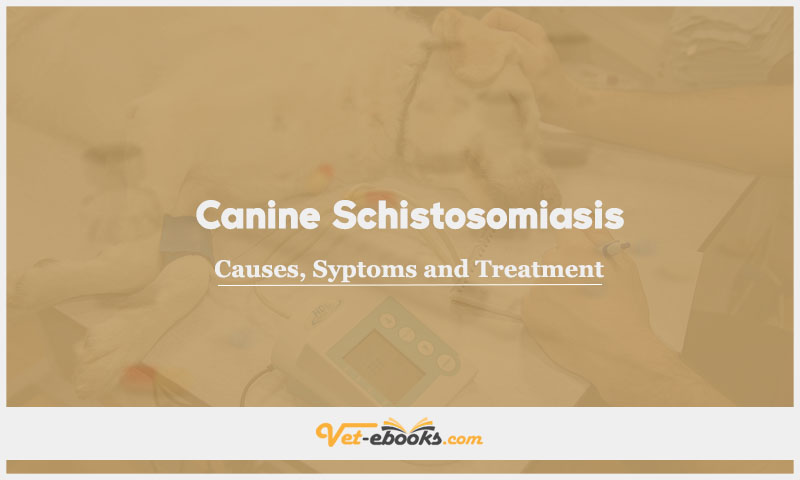
Overview
Schistosomiasis, also known as Heterobilharziasis, is a condition in dogs caused by the trematode parasite Heterobilharzia americanum, which belongs to the Schistosoma genus. This parasite utilizes freshwater lymnaeid snails as intermediate hosts and raccoons as its primary hosts.
Causes of Canine Schistosomiasis
Causes
The primary cause of Schistosomiasis in dogs is the Schistosoma genus parasite.
Risk factors
Dogs are at risk of infection when they swim in freshwater contaminated with cercariae, which originate from miracidia.
Pathogenesis of Canine Schistosomiasis
- Eggs excreted in the feces of raccoons hatch and release miracidia, which enter freshwater snail hosts.
- Following a period of development and asexual reproduction, the snails release cercariae, which infect the next host by penetrating their skin.
- Upon skin penetration, the larvae migrate to the lungs and subsequently travel to mesenteric veins, where males and females form pairs.
- Female worms lay eggs, some of which traverse the intestinal wall to be excreted in the feces, while others are transported via the bloodstream to various organs, where they lodge and induce granulomatous disease.
- Dogs contract the infection when they come into contact with freshwater containing cercariae.
Symptoms (History & Physical Examination) of Canine Schistosomiasis
History
Schistosomiasis typically affects adult dogs that have access to swampy regions or bayous.
Physical examination
- The most common symptoms are lethargy, loss of appetite, and weight loss.
- Additional symptoms may be vomiting, diarrhea, polyuria/polydipsia, black tarry stools, borborygmus, and abdominal fluid buildup (ascites).
Diagnosis of Canine Schistosomiasis
1- From History and Physical Examination
2- Diagnostic Procedures
- Miracidia-containing eggs can be identified in fecal samples, but it is essential to keep the feces in saline (not water) to prevent the spontaneous hatching of miracidia, which would make diagnosis impossible.
- Fecal direct or sedimentation methods are preferred over routine fecal flotation, as the heavy eggs may not be detected by standard flotation. If flotation is used, it should involve a sugar solution with a specific gravity of 1.3.
- Histopathology: Examination of tissues may reveal trematode eggs in multiple organs, particularly in the liver, intestine, pancreas, and lymph nodes. The histopathological findings may include lymphoplasmacytic, histiocytic, eosinophilic, or granulomatous enteritis, hepatitis with potential peri-portal fibrosis, and dystrophic mineralization in various tissues.
CBC/BIOCHEMISTRY/URINALYSIS
- Complete Blood Count (CBC): Possible abnormalities include anemia, low lymphocyte count (lymphopenia), low or high eosinophil count (eosinopenia or eosinophilia), and low platelet count (thrombocytopenia).
- Biochemistry: Elevated levels of liver enzymes, azotemia (excess nitrogen compounds in the blood), high calcium levels (hypercalcemia), elevated sodium levels (hypernatremia), increased globulin levels (hyperglobulinemia), and decreased albumin levels (hypoalbuminemia).
- Urinalysis: Presence of protein in the urine (proteinuria).
OTHER LABORATORY TESTS
- Elevated levels of parathyroid hormone-related protein (PTH-rp) have been observed in dogs with hypercalcemia.
- Polymerase Chain Reaction (PCR) testing on fecal samples (performed at Texas A&M Gastrointestinal Laboratory).
IMAGING
Contrast radiography and ultrasound examinations may reveal thickened bowel walls. Calcified eggs distributed in tissues may lead to the mistaken impression of soft tissue mineralization.
3- Differential Diagnosis
- Coccidiosis.
- Bacterial intestinal infection.
- Viral gastrointestinal inflammation.
- Hepatic disorders.
Treatment of Canine Schistosomiasis
General
Hospitalization during the initial days of treatment may be necessary, as the reaction to the elimination of the worms might necessitate additional medical support.
Medications:
- Praziquantel: The recommended dosage is 25 mg per kilogram, taken orally, every 8 hours for a duration of 2 to 3 days.
- Fenbendazole: Administered orally at a dosage of 50 mg per kilogram once daily for a period of 10 days. It’s important to note that fenbendazole may result in clinical improvement without complete elimination of the parasites, as has been reported.
Some Notes:
- Examine fecal samples post-treatment to confirm the absence of eggs.
- Be aware that reinfection can occur from the surrounding environment.
- In places like Japan and other regions where Schistosoma japonicum is prevalent, dogs can be infected with this human and zoonotic species of the parasite.
Do You Want To Increase Your Veterinary Knowledge and Practical Skills?
You Can Now Browse and Download +3000 Books For Veterinary Professionals & Students Online.
Download Veterinary Books

